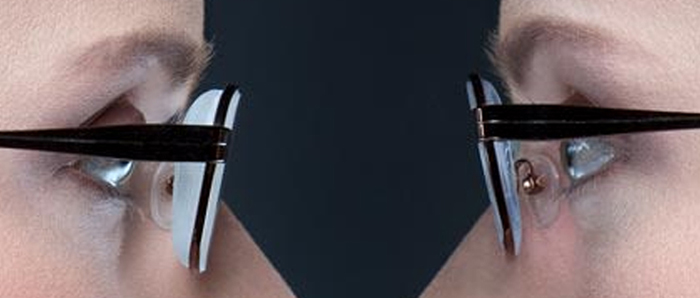SLIMMER TECHNOLOGY
Slimmer lenses are ideal for you if you are looking for eyeglasses that are lighter and thinner.
Doctors might recommend this type of lens if you have a strong prescription for eyeglasses for farsightedness, astigmatism, or nearsightedness.
Most people who wear eyeglasses are nearsighted. The lenses for this vision issue are usually thicker at the lens’ edge, but thin in the center. The edges of the lens become thicker as the prescription gets stronger.
Both regular and Slimmer lenses work to bend light to correct refractive errors. If you are very farsighted or nearsighted, your regular lenses will usually be quite heavy and thick. Slimmer lenses bend light more efficiently, so they do not have to be as thick to be effective.
There are many things to know about high-index lenses. Learning the basics can make it easier to talk to your eye doctor to determine if this lens is right for you.
What Are Slimmer Lenses?
A slimmer lens allows people with a stronger prescription to wear a lens that is lightweight and thin. This ensures more comfortable glasses even if your farsightedness, nearsightedness, or astigmatism prescription is high.
The lenses are a high-index plastic material. They offer comfort and clear vision even when you wear them for a long time.
They can sharpen your sight even further if you apply an anti-glare coating to the lenses. This is especially true when you wear your glasses at night.
These lenses can fit into most frames, including those that do not have a rim. The lenses are also usually resistant to scratches.
What Are Slimmer Lenses?
A slimmer lens allows people with a stronger prescription to wear a lens that is lightweight and thin. This ensures more comfortable glasses even if your farsightedness, nearsightedness, or astigmatism prescription is high.
The lenses are a high-index plastic material. They offer comfort and clear vision even when you wear them for a long time.
They can sharpen your sight even further if you apply an anti-glare coating to the lenses. This is especially true when you wear your glasses at night.
These lenses can fit into most frames, including those that do not have a rim. The lenses are also usually resistant to scratches.
Regular Lenses vs. Slimmer Lenses

Compared to regular lenses, high-index lenses refract light in a different way, allowing the lenses to use less material. Units called diopters are used to measure the lens power necessary to correct refractive errors.
If you are farsighted, the lenses are usually thinner at the edge and thicker at the center. They use “plus” measurements. For example, your prescription may be +2.00 D.
If you are nearsighted, your lenses are usually thinner at the center and thicker at the edge. They use “minus” measurements. For example, your prescription may be -2.00 D.
A high-index lens can be thinner while still effectively bending the light to correct your vision. The lighter weight of a high-index lens is ideal for all refractive errors, but especially for farsightedness. This is because strong farsightedness prescriptions can become quite heavy.
Strong farsighted prescriptions can sometimes produce a bug-eye look due to the thickness of the lenses. This is not an issue with high-index lenses since they have an aspheric design. The aspheric quality help to keep the center of the lens thinner for people who have farsightedness, so the curvature is flatter.
Who Might Benefit From Slimmer Lenses?
This type of lens is ideal for some people who have nearsightedness, astigmatism, or farsightedness. When someone is nearsighted, objects that are far away are blurry, but they can see close items clearly. This issue is due to the shape of the eye.
It causes an incorrect bending of light rays, so images focus in front of the retina. Under normal circumstances, images should focus on the retina.
The symptoms of nearsightedness may include:
- Squinting to see clearly.
- Vision blurs when looking at distant objects.
- Trouble seeing when you drive, especially in the dark.
- Eyestrain-related headaches.
Astigmatism causes your vision to become blurry. This happens when the shape of the cornea is irregular.
In some cases, astigmatism is due to the lens inside the eye having an irregular curvature. The irregular lens or cornea can prevent light from being able to focus on the retina properly. This condition can occur along with farsightedness or nearsightedness.
Farsightedness is a condition that makes it difficult to see up-close objects clearly. When farsightedness is significant, blurry vision is possible when you are trying to see both far and near objects.
This condition occurs when images focus behind your retina instead of directly on this structure. Abnormal lens or cornea shape, or your eyeball being too short, can cause this issue.